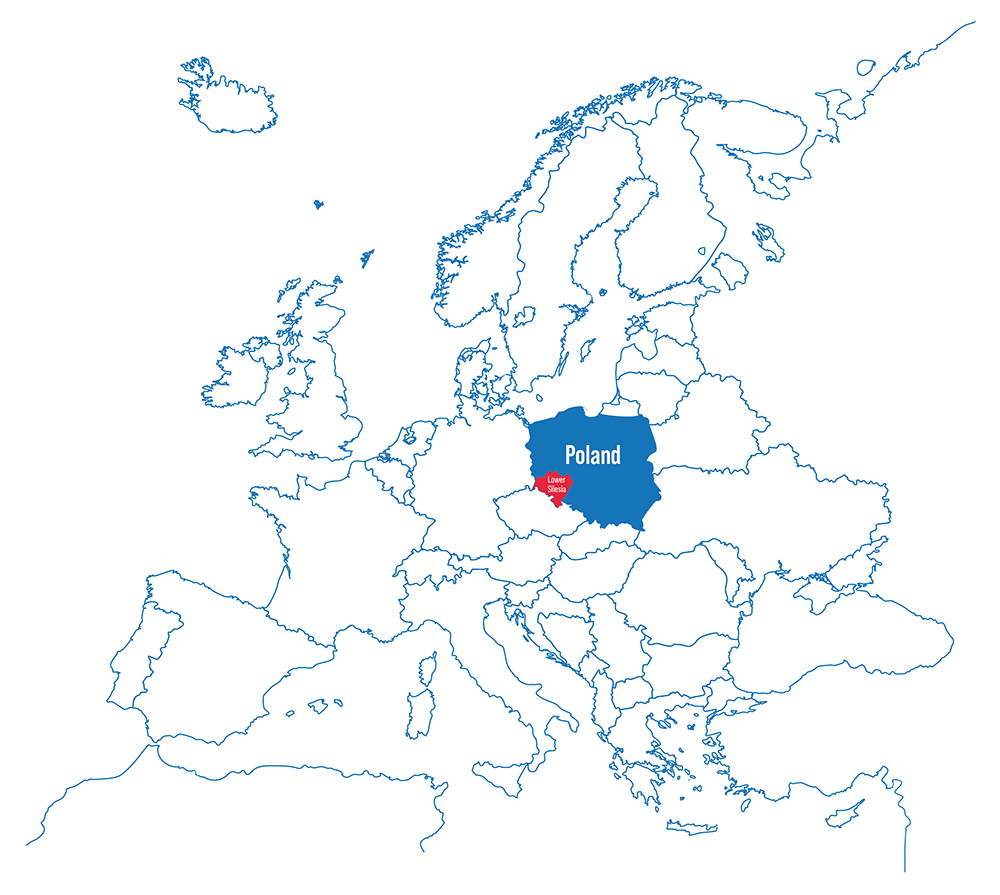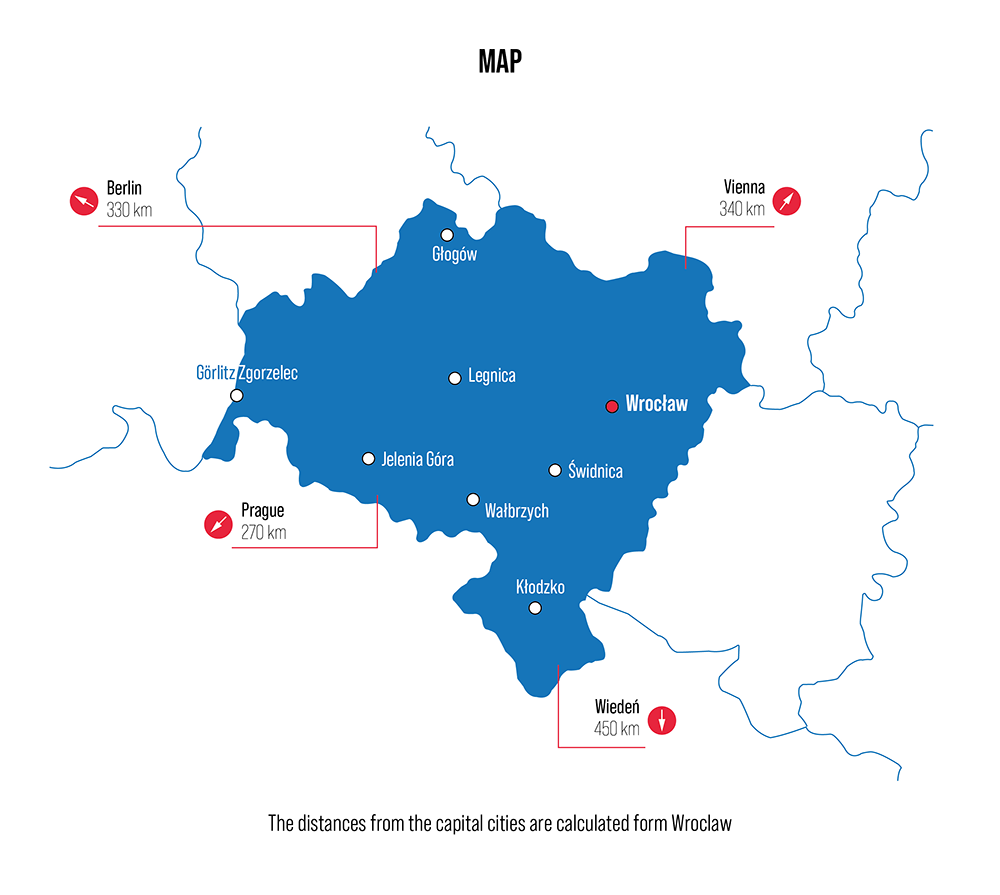WROCŁAW AND REGION GEOPOLITICAL DATA
General information
- The area of Lower Silesian Province is 19 947.2 km2.
- Inhabitants – 2 915 238 (data as for November 2017).
- The Province capital city is Wrocław, the forth largest city in Poland.
- The city area: 293 km2
- Population in Wrocław: 638 thousand (acc. to data at the end of 2017)
HOW TO GET TO LOWER SILESIA?
The Mikołaj Kopernik Airport in Wrocław is located in the south-western part of the city, within the distance of approx. 10 km form the city centre, nearby the Wrocław Motorway Ring Road, by which you can get to the airport quickly and comfortably, both from the side of Warsaw (through the motorway connector from Długołęka), from Poznań side, from trunk (national) road No. 5, and also from the south form trunk road No. 8 and from motorway A4. From Wroclaw airport you can get to Frankfurt, Paris, London or Rome. A few international roads run across Lower Silesia, with the motorway A4 in the lead. The region capital city – Wrocław is connected with the rest of the country by a number of main roads:
- motorway A4, running to the German border and to Katowice and Kraków (the section running to the eastern border is in construction),
- road No. 8, north-east of Warsaw and to Kłodzko and Kudowa-Zdrój, and further southward to the Czech Republic,
- road No. 5 to Poznań and to Strzegom, Kamienna Góra and further southward to the Czech Republic,
- road No. 94 to Legnica and Opole,
- road No. 35 to Świdnica and Wałbrzych.
The average journey time:
- to Warsaw – 3,5 hours
- to Berlin – 3,5 hours
- to Vienna – 5,5 hours
- to Prague – 4 hours
- to Poznan – 3 hours
- to Krakow – 3,5 hours
- to Łódź – 2,5 hours
The railway network in Lower Silesia is very dense. There are direct trains coming from all larger cities in Poland to Wrocław Railway Central Station at ul. Piłsudskiego 105, there are also trains form Berlin and Hamburg. Wrocław, Legnica, Bolesławiec and Zgorzelec also have railway connection with Görlitz.
THE CLIMATE
The climate of Lower Silesia is the warmest in Poland. The winds blow from the West, and more rarely masses of warm air from the area of the Mediterranean and the Azores occur. The plants growing season in Lower Silesia lasts 225 days, which means it is the longest in Poland – as soon as in March we can see yellow forsythias blooming. Characteristic for the region are continual passes of low pressure bringing periods of a few days of rainy and cloudy weather. The rains are the most intensive in July, and the annual rainfall is 600 mm. The winters on the lowland are most often without snow, but in the mountains, in higher parts of the Sudety Mountains, the snow remains for 200 days a year and sometimes stays till April.





















